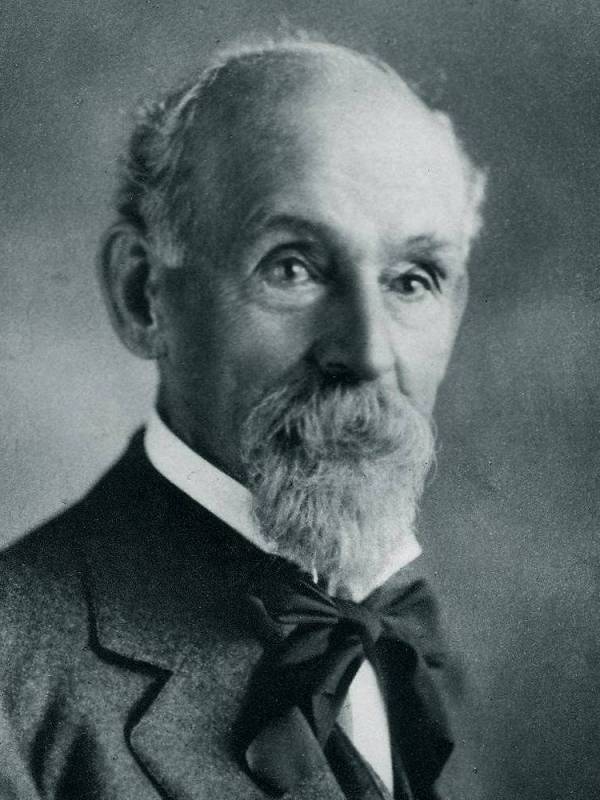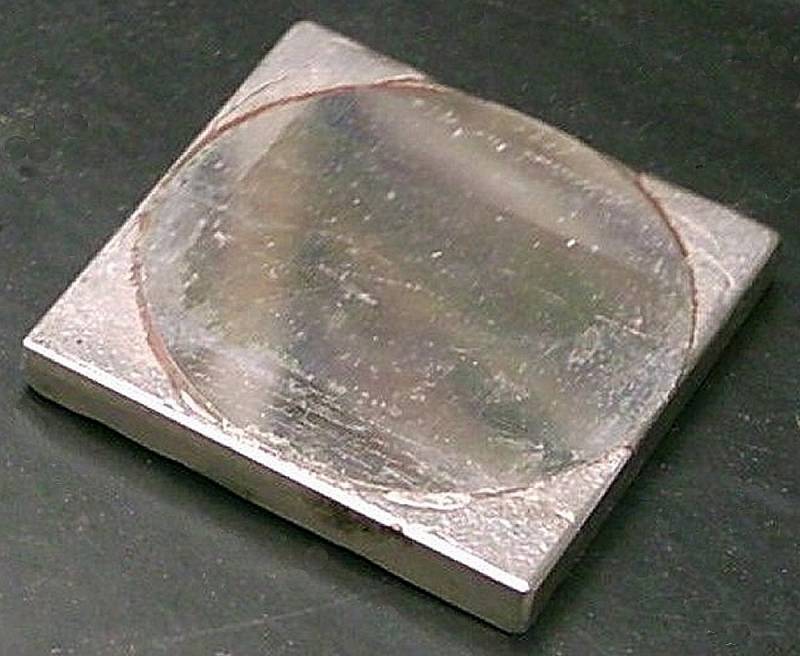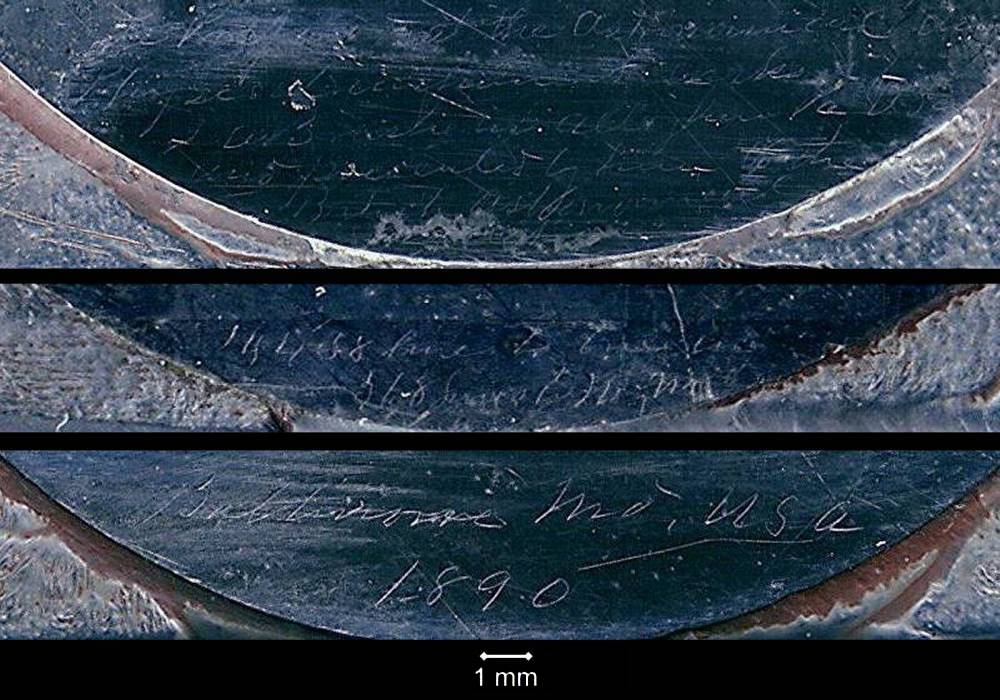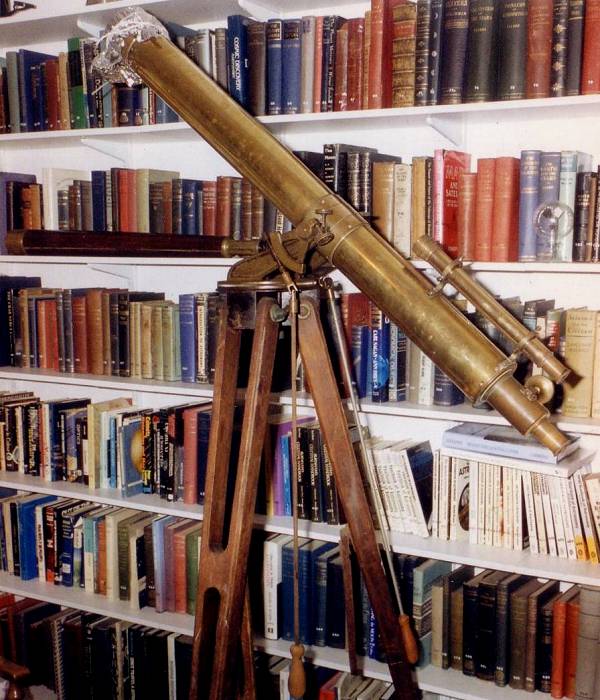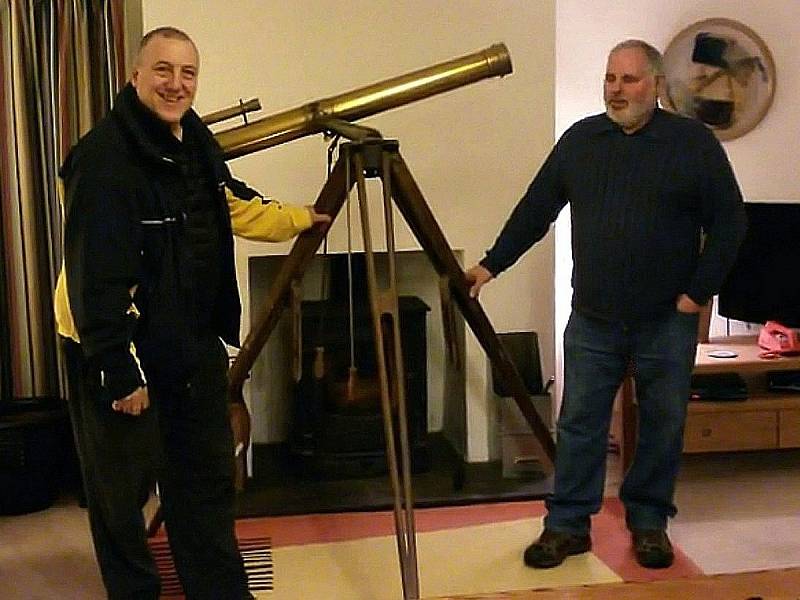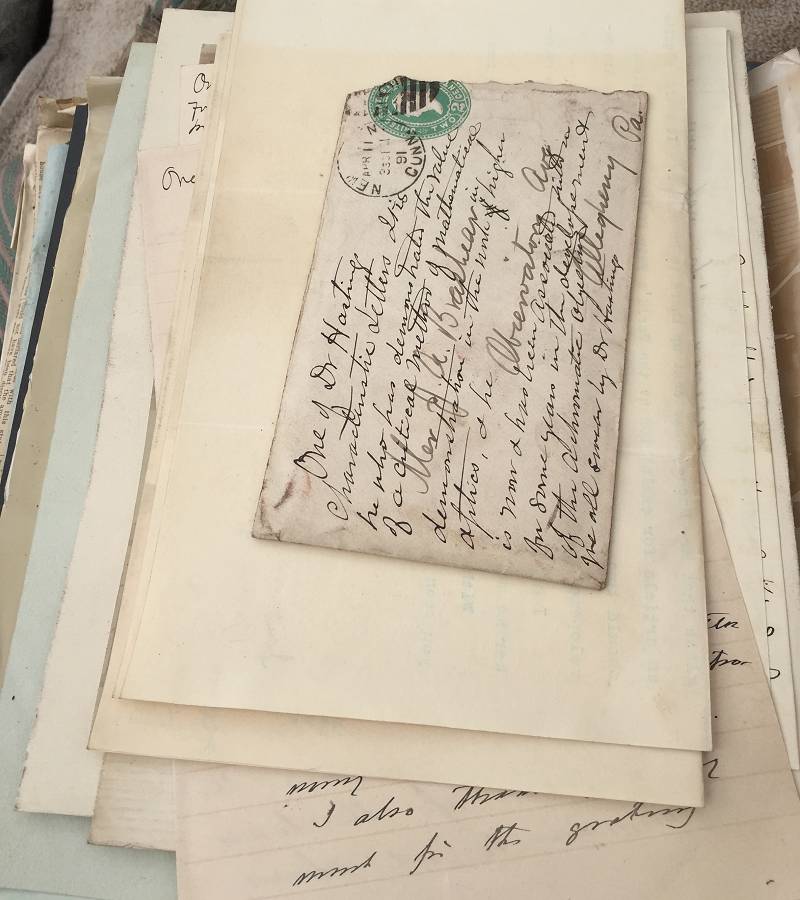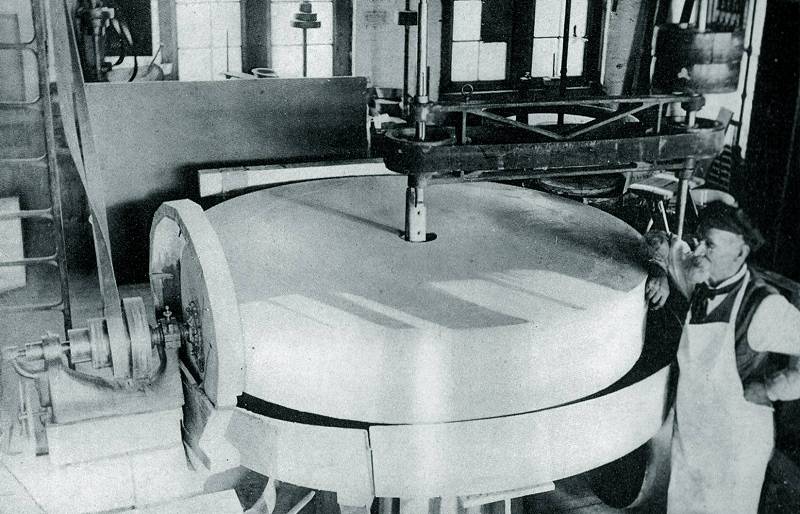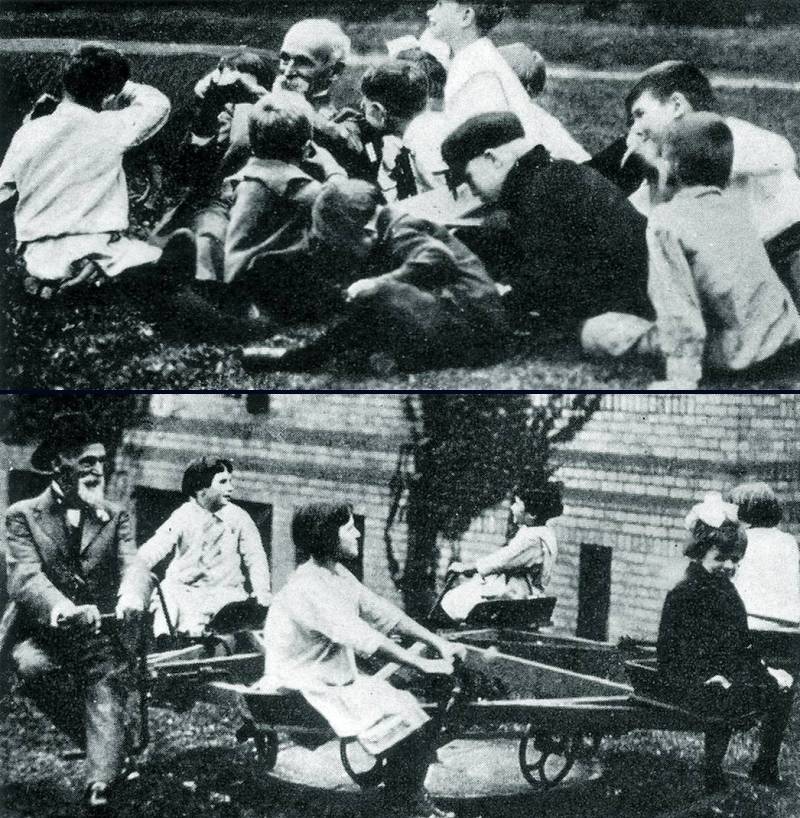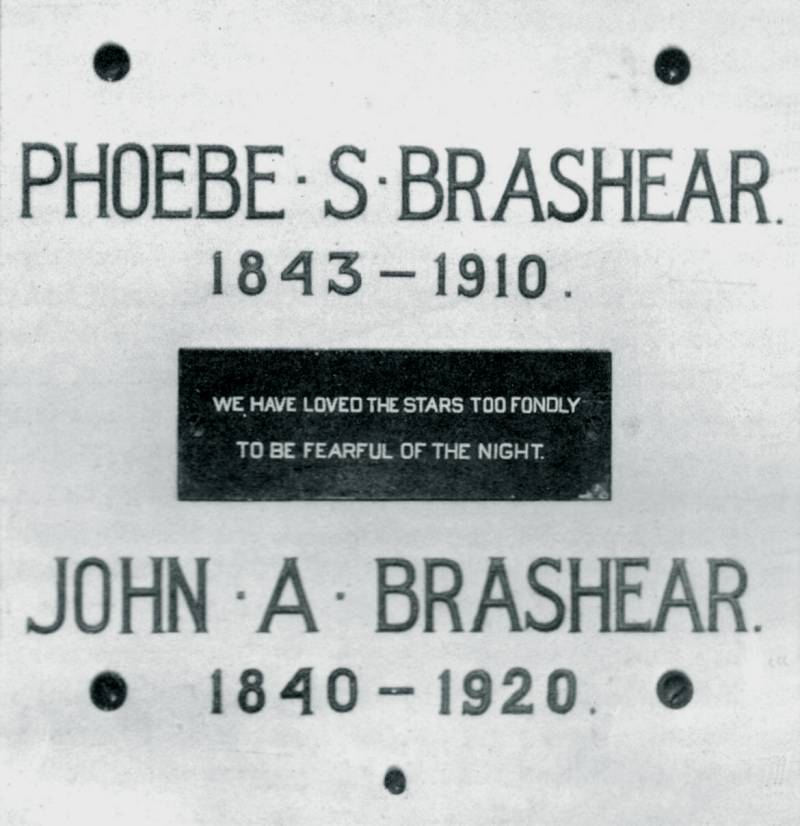|
John Brashear and
the BAA R.
A. Marriott Journal of the British Astronomical Association, 125 (3) (June 2015), 175–6 |
|
John
Alfred Brashear (1840–1920).
The
Brashear–Rowland grating: BAA instrument
no. 1. |
|
The British
Astronomical Association was founded in 1890 – officially on October 1,
though it was not until the first General Meeting on October 24 that the name
was finally established and the first Council elected. Among those who joined
before the end of that year – the Original Members – was the
instrument maker John A. Brashear, of Pittsburgh, Pennsylvania. In 1888
Brashear had toured the British Isles and Europe. He seems to have been
particularly impressed with British amateurs, and immediately he joined the
Association he presented a diffraction grating prepared at his own works and
ruled on the engine designed by Henry A. Rowland, professor of physics at Johns
Hopkins University, Baltimore. Brashear prepared the plates for these
gratings, which were made of speculum metal [1] (an alloy of copper and tin)
because much finer lines could be produced than could be engraved on glass.
The engine was at first designed to rule about 43,000 lines per inch, but
Rowland afterwards determined that better results could be obtained with
14,438 lines per inch, which he defined as his standard. ‘The success
of the ruling engine’, Brashear wrote later, ‘depended on the
geometrical perfection of the surfaces of the speculum-metal plates to be
polished. They required not only a very high polish, but a very accurate
surface; say, no error of one fifth of a light wave, or approximately, one
two-hundred-thousandth of an inch.’ [2] Over many years, Brashear was
the sole supplier of the finished plane and concave gratings, which were
‘sought by every physical laboratory in the world.’ During
Brashear’s second visit to Britain in 1892 he spoke at the
Association’s meeting on April 27. [3] Later, he described the
Association as an organisation which had in its membership: ... many amateurs who
loved astronomy, but who worked at regular vocations, some of which were of
menial character, but if they had done good work in adding to the sum of
knowledge in the beautiful science of astronomy, they were honoured and
received as kindly as if they were the greatest moguls of the country. I
think that scientific men respect the work of enthusiastic amateurs, if that
work is done in a conscientious, careful manner.’ [4] From
1890 to 1936 the grating was used successively by John Evershed, Walter
Maunder, and Charles Butler. In 1952 it was placed on loan to another Member,
but a few years later he disappeared and the grating was written off as lost.
Then, in 2004 I received a letter from that same Member, informing me that he
wanted to return the grating and that he would be moving to Cyprus at the end
of that week. So, I immediately travelled to the south coast and recovered
it. It measures 36 x 36 mm with a ruled area 29 x 21 mm, and is inscribed:
‘Ruled on Rowland’s Engine. Johns Hopkins University, Baltimore,
Md. U.S.A. 1890. Plate prepared at the Astronomical and Physical Instruments
Works of J.A. Brashear, Allegheny, Pa., U.S.A., and presented by him to the
British Astronomical Association. 14,438 lines to one in. 568 lines to mm.
A.E. Decemb. 10, 1890.’ This grating – later designated
instrument no. 1 – is not only an early example of a new technology; it
is a tangible record of international recognition of the Association
immediately it was founded. Historically, it is the Association’s most
important and valuable instrument. |
||||
|
The inscription on three sides of the upper face of the
grating. |
|
In the early
years of the Association there was no intention of forming an instrument
collection, and they were not numbered until several years later. [5] Only
two other instruments by Brashear have been presented: no. 64, a
3½-inch refractor presented by the family of H. P. Thompson in 1937;
and no. 209, a 5-inch object-glass presented by D. Cassels Brown in 1959. The
object-glass was lost within a few years, while the refractor was loaned to a
school in Lancaster in 1946 and disappeared several years later. In 1985,
however, Denis Buczynski found the refractor and rescued it from that same
school. It had not been used for many years and required restoration, so
Denis therefore retained stewardship of it until a decision could be made
concerning its future. We discussed this on several occasions, and following
his suggestion we eventually decided that it would be ideal if it were to
find a home with a dedicated specialist and that I should propose to Council
that it be presented to Bart Fried, founder and President of the Antique
Telescope Society. This organisation is based in New York and has an
international membership which acts as a link between numerous enthusiasts,
researchers, collectors, and users of classic telescopes, and presentation of
the Brashear telescope offered an opportunity for developing international
relations. After Council agreed to this proposal in January I wrote to Bart
to inform him of the decision, to which he replied: ‘What can I say but
that I accept! It’s very kind and you can be sure that it will be well
cared for and definitely used.’ |
||||
|
Bart had
already arranged to visit Denis during his travels around England and
Scotland in March, and I therefore asked Denis to act on my behalf (as
Curator of Instruments) as representative of the Association by formally
presenting the instrument to Bart during his visit. This short ceremony took
place at Denis’s home on March 20 (the day of the solar eclipse). A few
days later I showed the Brashear grating to Bart when I met with him at
Richard McKim’s home, where we spent a very pleasant and enjoyable few
hours. Bart has since sent a letter of appreciation addressed to
the President, Officers, and Members of the British Astronomical Association: This
is an especially prized gift, because I have been researching the life and
work of Dr Brashear since 1985 and I collect Brashear memorabilia. Fortunately,
this telescope has suffered minimally over the years. The optics are in good
shape, and it will be a labor of love to restore it to its original
condition. More importantly, it will be used. There are very few remaining of
this particular model refractor, but a notable example is now on display at
the South Carolina State Museum, in the Robert Ariail Collection. That one
will be a good example to help with the restoration of ‘The BAA
Brashear’. Uncle John, as Brashear was commonly known around Pittsburgh,
was a good friend of the BAA, and he gave the Association a gift of a small
presentation Rowland–Brashear diffraction grating – one of the
products that earned him fame with astronomers throughout the world. It is
still in your collection, and Bob Marriott proudly showed it to me during my
visit. So I give my heartfelt Thank You to my friends in the British
Astronomical Association, for the wonderful hospitality given during my visit
and for the very kind gift of the Brashear telescope. |
|
The Brashear 3½-inch refractor. |
||||
|
Brashear’s factory, built in 1886, was an important building
in the history of Pittsburgh and was listed in the National Register of
Historic Places. In March, however, one of the walls collapsed and the
building was considered unsafe. During the demolition, a sealed brass box was
discovered in the foundations. This time capsule, opened on March 24, was
found to contain several dozen letters, documents, photographs, and other
memorabilia. Bart Fried has since examined this collection, which includes a
letter from Sir Howard Grubb to Brashear, congratulating him on the
establishment of his factory, stating that he was pleased to sponsor
Brashear's membership of the Association (Grubb served on the first Council),
and suggesting that they might find common ground to work together on
projects – a mark of international cooperation and friendship. With the
remarkable coincidence of this unexpected find, it seems appropriate that 125
years after Brashear’s gift to the Association, one of his instruments
should return home. Notes
and references 1 Speculum metal was used for telescope mirrors from the time
of Newton’s telescope until the advent of silver-on-glass mirrors in
the mid-nineteenth century. The gratings were expensive, so few amateurs
could afford them. In 1898, Thomas Thorp – a Member of the Association
– announced his invention of the replica grating consisting of a cast
produced from a thin solution of celluloid in amyl acetate. Thorp designed
various instruments, including telescopes and spectroscopic equipment, and
also invented and designed the first coin-slot gas meters, |
|
Bart
Fried (left) receives the Brashear refractor from Denis
Buczynski. (Frame from a video recording by David Storey and Glyn Marsh.) |
|
|
2 W. L. Scaife (ed.), John A. Brashear: The Autobiography of a
Man who Loved the Stars. New York: The American Society of
Mechanical Engineers, 1924, p. 75. 3 ‘Report of the Meeting of the Association
held April 27, 1892’, Journal of
the British Astronomical Association, 2 (1892), 319–21. |
4 5 |
Scaife
(ed.), Autobiography, p. 120. R. A. Marriott, ‘The BAA observatories and
the origins of the instrument collection’, Journal of the British Astronomical Association, 117 (2007),
309–13. |
|
|
_______________________________________________________________ Al Paslow was present when the time capsule was opened on
March 24, and a selection of photographs of the contents can be
viewed on his website |
|
_______________________________________________________________ Rough-grinding the 72-inch mirror for the Dominion
Astrophysical Observatory
|
|
_______________________________________________________________ W. L. Scaife, the editor of Uncle John’s
autobiography, writes in the Foreword: ‘There was a genius other than mechanical which made
John Brashear Pennsylvania’s best-loved citizen, the intimate of
millionaires and paupers, of scientists, educators, and untutored workmen, the
friend of the newsboy, the natural, easy playmate of little blind
children. It was the genius of a rare personality.’
|
|
_______________________________________________________________ A literary countermeasure against ‘security’
lighting: the epitaph on the memorial to Brashear and his wife at Allegheny
Observatory ...
This is the slightly modified last line of ‘The Old
Astronomer to His Pupil’ by the English poetess Sarah Williams (1837–1868): Reach me down my Tycho Brahe, I would know him when we
meet, When I share my later science, sitting humbly at his feet; He may know the law of all things, yet be ignorant of how We are working to completion, working on from then to now. Pray remember that I leave you all my theory complete, Lacking only certain data for your adding, as is meet, And remember men will scorn it, ‘tis original and
true, And the obloquy of newness may fall bitterly on you. But, my pupil, as my pupil you have learned the worth of
scorn, You have laughed with me at pity, we have joyed to be
forlorn, What for us are all distractions of men's fellowship and
smiles; What for us the Goddess Pleasure with her meretricious
smiles! You may tell that German College that their honour comes
too late, But they must not waste repentance on the grizzly savant's
fate. Though my soul may set in darkness, it will rise in
perfect light; I have loved the stars too fondly to be fearful of the
night. |

